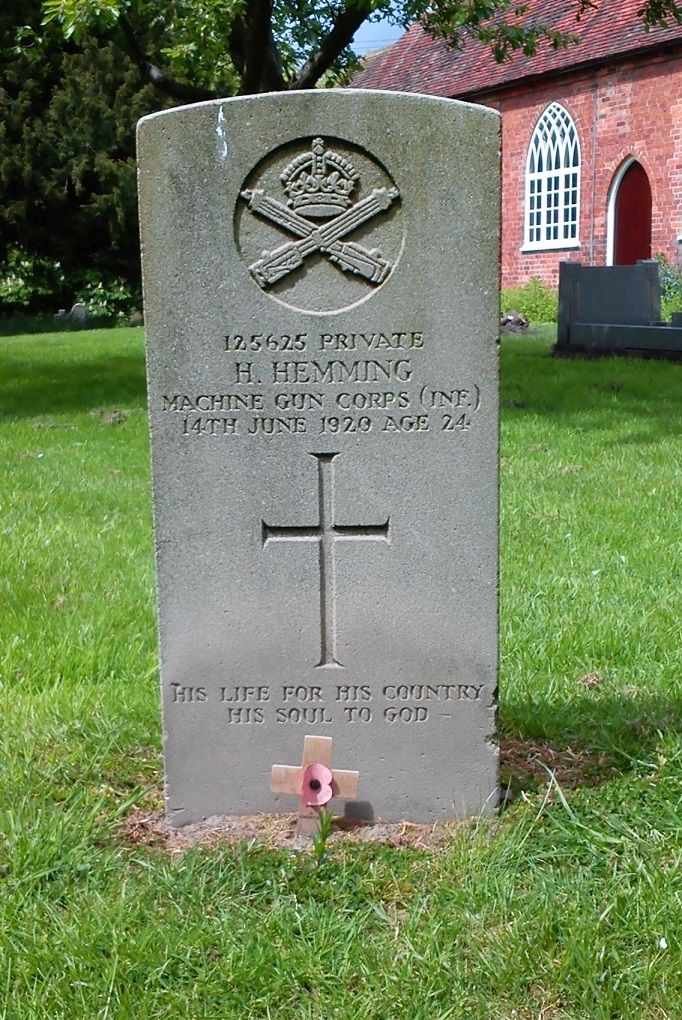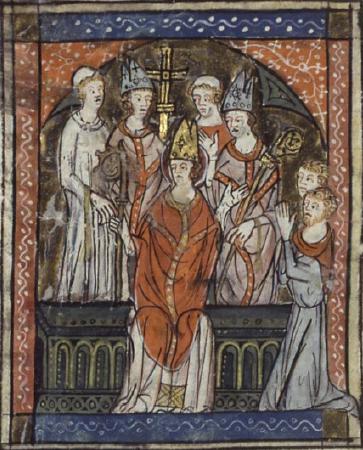|
Érin
Érin () is a commune in the Pas-de-Calais department in the Hauts-de-France region in France. Situation Érin is a small village on the south side of the small river, the Ternoise which flows through St.Pol-sur-Ternoise and joins the River Canche at Hesdin. The geology of the area is like that of the Somme valley to its south. The Ternoise valley is the most northerly flowing in the syncline to the south of the Variscan front. The London-Brabant Massif underlies the land to the north. Communications The road, D94 follows the river between St.Pol and Hesdin. Alongside it runs the Arras to Boulogne-sur-Mer railway. History During the First World War, the principal depôt of the British Army unit, then known as the Tank Corps, developed at Érin. The Tank Corps developed through the Heavy branch of the Machine Gun Corps from the Heavy Section. This was founded in March 1916. The depôt was known as the Central Workshops and was set up in January 1917 under the command of Maj ... [...More Info...] [...Related Items...] OR: [Wikipedia] [Google] [Baidu] |
Communes Of The Pas-de-Calais Department
The following is a list of the 890 communes of the Pas-de-Calais department of France. The communes cooperate in the following intercommunalities (as of 2020):BANATIC Périmètre des EPCI à fiscalité propre. Accessed 3 July 2020. * Communauté urbaine d'Arras * Communauté d'agglomération de Béthune-Bruay, Artois-Lys Romane * Communauté d'a ... [...More Info...] [...Related Items...] OR: [Wikipedia] [Google] [Baidu] |
Communauté De Communes Du Ternois
The Communauté de communes du Ternois is a ''communauté de communes'', an intercommunal structure, in the Pas-de-Calais and Somme departments, in the Hauts-de-France region, northern France. It was created in January 2017 by the merger of the former communautés de communes L'Auxillois, Région de Frévent, Le Pernois and Vertes Collines du Saint-Polois. 30 August 2016, p 59 Its area is 633.6 km2, and its population was 38,158 in 2018.Comparateur de territoire INSEE, accessed 8 April 2022. Its seat is in |
Ternoise
The river Ternoise (; nl, Ternaas) is one of the small chalk streams that flow from the plateau of the southern Boulonnais and Picardy, via the Canche, into the English Channel. The basin of the Ternoise extends to and lies in the southern end of the ''département'' of Pas-de-Calais. It is one of the rivers of the Seven Valleys tourist area and gives its name to the Ternois area. Geography The long river rises at Ligny-Saint-Flochel and passes through Saint-Pol-sur-Ternoise to join the river Canche at Huby-Saint-Leu, near to the town of Hesdin. Towns and villages along the course The Ternoise flows through the following places (all within the Pas-de-Calais department): *Ligny-Saint-Flochel, Roëllecourt, Saint-Michel-sur-Ternoise, Saint-Pol-sur-Ternoise, Gauchin-Verloingt, Hernicourt, Wavrans-sur-Ternoise, Monchy-Cayeux, Anvin, Teneur, Érin, Tilly-Capelle, Blangy-sur-Ternoise, Blingel, Rollancourt, Auchy-lès-Hesdin, Le Parcq, Grigny and Huby-Saint-Leu. Tributaries The ... [...More Info...] [...Related Items...] OR: [Wikipedia] [Google] [Baidu] |
Fleury, Pas-de-Calais
Fleury () is a commune in the Pas-de-Calais department in the Hauts-de-France region of France. Geography A small farming village situated northwest of Arras, on the D98 road. Population Places of interest * The church of Notre-Dame, dating from the fourteenth century. See also *Communes of the Pas-de-Calais department The following is a list of the 890 communes of the Pas-de-Calais department of France. The communes cooperate in the following intercommunalities (as of 2020):Communes of Pas-de-Calais {{Arras-geo-stub ... [...More Info...] [...Related Items...] OR: [Wikipedia] [Google] [Baidu] |
Bermicourt
Bermicourt () is a commune in the Pas-de-Calais department in the Hauts-de-France region in northern France. Geography A small farming village located 28 miles (47 km) northwest of Arras on the D98 road. History On 15 September 1916, during the First World War, shortly before Haig's attack on Flers, the British Tank Corps, equipped with its new 'secret weapon', the tank, and commanded by General Hugh Elles set up its headquarters at Chateau de Bermicourt. At that time the chateau belonged to Count Jean de Hauteclocque. The headquarters remained stationed there until the end of the war. at www.ternois-tourisme.com. Retrieved 18 Mar 2016. Population Sights * The church of Notre-Dame ...[...More Info...] [...Related Items...] OR: [Wikipedia] [Google] [Baidu] |
Machine Gun Corps
The Machine Gun Corps (MGC) was a corps of the British Army, formed in October 1915 in response to the need for more effective use of machine guns on the Western Front in the First World War. The Heavy Branch of the MGC was the first to use tanks in combat and was subsequently turned into the Tank Corps, later called the Royal Tank Regiment. The MGC remained in existence after the war until it was disbanded in 1922. Formation At the outbreak of the First World War in August 1914, the tactical potential of machine guns was not appreciated by the British Armed Forces. The prevalent attitude of senior ranks at the outbreak of the Great War can be summed up by the opinion of an officer expressed a decade earlier that a single battery of machine guns per army corps was a sufficient level of issue. Despite the evidence of fighting in Manchuria (1905 onwards) the army therefore went to war with each infantry battalion and cavalry regiment containing a machine gun section of ... [...More Info...] [...Related Items...] OR: [Wikipedia] [Google] [Baidu] |
Royal Tank Regiment
The Royal Tank Regiment (RTR) is the oldest tank unit in the world, being formed by the British Army in 1916 during the First World War. Today, it is the armoured regiment of the British Army's 12th Armoured Infantry Brigade. Formerly known as the Tank Corps and the Royal Tank Corps, it is part of the Royal Armoured Corps. History First World War The formation of the Royal Tank Regiment followed the invention of the tank. Tanks were first used at the Battle of Flers–Courcelette in September 1916 during the Battle of the Somme in the First World War. They were at first considered artillery, and crews received artillery pay. At that time the six tank companies were grouped as the Heavy Section of the Machine Gun Corps (MGC). In November 1916 the eight companies then in existence were each expanded to form battalions (still identified by the letters A to H) and designated the Heavy Branch MGC; another seven battalions, I to O, were formed by January 1918, when all the battalio ... [...More Info...] [...Related Items...] OR: [Wikipedia] [Google] [Baidu] |
British Army
The British Army is the principal land warfare force of the United Kingdom, a part of the British Armed Forces along with the Royal Navy and the Royal Air Force. , the British Army comprises 79,380 regular full-time personnel, 4,090 Gurkhas, and 28,330 volunteer reserve personnel. The modern British Army traces back to 1707, with antecedents in the English Army and Scots Army that were created during the Restoration in 1660. The term ''British Army'' was adopted in 1707 after the Acts of Union between England and Scotland. Members of the British Army swear allegiance to the monarch as their commander-in-chief, but the Bill of Rights of 1689 and Claim of Right Act 1689 require parliamentary consent for the Crown to maintain a peacetime standing army. Therefore, Parliament approves the army by passing an Armed Forces Act at least once every five years. The army is administered by the Ministry of Defence and commanded by the Chief of the General Staff. The British ... [...More Info...] [...Related Items...] OR: [Wikipedia] [Google] [Baidu] |
World War I
World War I (28 July 1914 11 November 1918), often abbreviated as WWI, was List of wars and anthropogenic disasters by death toll, one of the deadliest global conflicts in history. Belligerents included much of Europe, the Russian Empire, the United States, and the Ottoman Empire, with fighting occurring throughout Europe, the Middle East, Africa, the Pacific Ocean, Pacific, and parts of Asia. An estimated 9 million soldiers were killed in combat, plus another 23 million wounded, while 5 million civilians died as a result of military action, hunger, and disease. Millions more died in Genocides in history (World War I through World War II), genocides within the Ottoman Empire and in the Spanish flu, 1918 influenza pandemic, which was exacerbated by the movement of combatants during the war. Prior to 1914, the European great powers were divided between the Triple Entente (comprising French Third Republic, France, Russia, and British Empire, Britain) and the Triple A ... [...More Info...] [...Related Items...] OR: [Wikipedia] [Google] [Baidu] |
Boulogne-sur-Mer
Boulogne-sur-Mer (; pcd, Boulonne-su-Mér; nl, Bonen; la, Gesoriacum or ''Bononia''), often called just Boulogne (, ), is a coastal city in Northern France. It is a sub-prefecture of the department of Pas-de-Calais. Boulogne lies on the Côte d'Opale, a touristic stretch of French coast on the English Channel between Calais and Normandy, and the most visited location in the region after the Lille conurbation. Boulogne is its department's second-largest city after Calais, and the 183rd-largest in France.Téléchargement du fichier d'ensemble des populations légales en 2017 [...More Info...] [...Related Items...] OR: [Wikipedia] [Google] [Baidu] |
Communes Of France
The () is a level of administrative division in the French Republic. French are analogous to civil townships and incorporated municipalities in the United States and Canada, ' in Germany, ' in Italy, or ' in Spain. The United Kingdom's equivalent are civil parishes, although some areas, particularly urban areas, are unparished. are based on historical geographic communities or villages and are vested with significant powers to manage the populations and land of the geographic area covered. The are the fourth-level administrative divisions of France. vary widely in size and area, from large sprawling cities with millions of inhabitants like Paris, to small hamlets with only a handful of inhabitants. typically are based on pre-existing villages and facilitate local governance. All have names, but not all named geographic areas or groups of people residing together are ( or ), the difference residing in the lack of administrative powers. Except for the municipal arr ... [...More Info...] [...Related Items...] OR: [Wikipedia] [Google] [Baidu] |
Arras
Arras ( , ; pcd, Aro; historical nl, Atrecht ) is the prefecture of the Pas-de-Calais department, which forms part of the region of Hauts-de-France; before the reorganization of 2014 it was in Nord-Pas-de-Calais. The historic centre of the Artois region, with a Baroque town square, Arras is in Northern France at the confluence of the rivers Scarpe and Crinchon. The Arras plain is on a large chalk plateau bordered on the north by the Marqueffles fault, on the southwest by the Artois and Ternois hills, and on the south by the slopes of Beaufort-Blavincourt. On the east it is connected to the Scarpe valley. Established during the Iron Age by the Gauls, the town of Arras was first known as ''Nemetocenna'', which is believed to have originated from the Celtic word '' nemeton'', meaning 'sacred space.' Saint Vedast (or St. Vaast) was the first Catholic bishop in the year 499 and tried to eliminate paganism among the Franks. By 843, Arras was seat of the County of Artois w ... [...More Info...] [...Related Items...] OR: [Wikipedia] [Google] [Baidu] |


